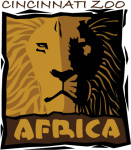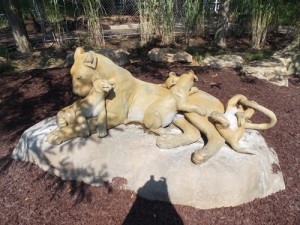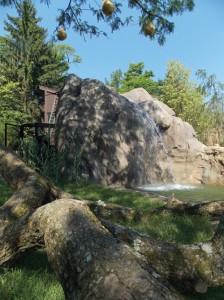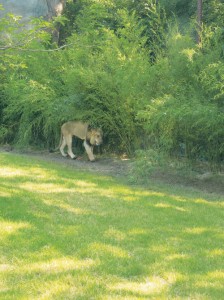The Cats Slides
The grassy plains of Africa, cascading waterfalls, flowing streams and a communal watering hole give you the experience of an African Safari here at the Cincinnati Zoo. Phase III of the Africa exhibit features a footpath that winds under a wooden bridge, naturalistic rocks and termite mounds. And Pride Rock the new home of the African Lions that you can see up close and personal through the twelve foot tall glass wall.
The path continues and leads to the Cheetah Encounter where cheetahs can be seen racing at top speeds and other cats including fishing cats, African servals and Anatolian shepherds can be seen frolicking through the quiet grasslands. You can also see a red river hog at the Cheetah Encounter.
See the Zoo’s herd of Maasai giraffes from the expanded Giraffe Deck that now features a covered Tree-house reaching out to the giraffe yard taking visitors closer than ever to the Zoo’s tallest residents. In addition, there’s a new Circle of Love animal encounter where guests can meet unique African animals from 10a.m. – 3 p.m. daily.
The Zoo is still in the midst of a campaign to complete Phases IV and V which will bring Zebra, gazelles and some of the most beautiful birds to the Savannah portion of the exhibit and a much anticipated hippo area with both above and below water viewing.
“Because most people don’t get the opportunity to visit Africa, taking in the natural beauty of its landscape and wildlife, the zoo has decided to bring Africa to you,” said Thane Maynard, Executive Director of the Cincinnati Zoo. “Africa is what most people think of when they picture wild animals in their natural habitat. Our hope is for the zoo visitors to leave here feeling connected with Africa and feeling inspired to help save wildlife in wild places. We want them to experience their own African safari – one that they can enjoy in the near future and remember for a lifetime.”
Green Building Standards
The “greenest zoo in America” is keeping it green, the Africa site restored almost the entire area from an existing parking lot and features underground storage tanks that hold roughly 400,000 gallons of water that is collected, stored and reused. 75% of all the construction waste was diverted from landfills and sent to recycling centers.







